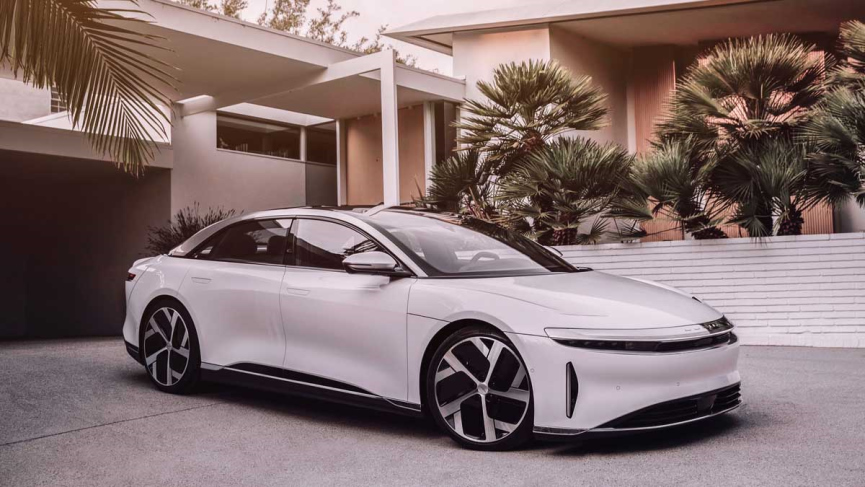Norwegian startup Sonair aims to utilize ultrasound technology, commonly known for noninvasive scans and underwater communication, for 3D computer vision in autonomous hardware
Knut Sandven, the founder, and CEO of Sonair, thinks that the company’s application of ultrasound technology, a revolutionary approach that reads sound waves to detect people and objects in 3D with minimal energy and computational requirements, can serve as the foundation for more cost-effective and beneficial solutions than the current standard approach, which employs lidar.

Sonair has recently secured $6.8 million in funding from early-stage specialists Skyfall and RunwayFBU, as well as previous investors, in exclusive news disclosed to TechCrunch. The company is currently in the process of providing early access to its technology.
Initially, it will be targeted at developers of autonomous mobile robots; however, its ultimate goal is to be implemented in various other applications.
Sandven stated, “Our initial strategy for going to market involves transporting goods from one location to another, with a particular emphasis on autonomous mobile robots [AMRs].”
“We are commencing our operations indoors to maintain our focus. However, we will expand into other robotic categories and the automotive sector in the future.”
The name Sonair is a play on the 3D capabilities of water-traveling sonar, but it is applied to sensors that detect signals in the air, which is essentially what the startup has produced.
Sandven is an entrepreneur and engineer who founded GasSecure, which specializes in developing gas sensors utilizing MEMS technology. MEMS technology is a blend of mechanical and electronic components that creates microscopic devices with moving parts.
(The petrochemical industry is a significant component of Norway’s national economy.)
Sandven began contemplating alternative applications of MEMS technology following the acquisition of GasSecure by a German industrial safety specialist.
He investigated research conducted by SINTEF, a group that collaborates with Norway’s primary science and technological university to commercialize research. Over the years, the group has generated numerous companies due to its activity.
He stated that SINTEF had developed a novel ultrasonic sensor that was “commercially viable” and related to MEMS.
Sonair was established when Sandven acquired the technology’s intellectual property (IP), expressly designed for acoustic ranging and detection. Sandven recruited the researchers who developed the technology.
Even though lidar has become an integral component of the development of autonomous systems in recent years, there is still room for alternative or complementary methods.
Lidar is still regarded as costly, and it continues to experience interference from light sources, specific surfaces, and materials. Additionally, it has a range of limitations.
Sandven thinks that Sonair has a viable chance, as its technology will reduce the overall cost of sensor packages by between 50% and 80%, even though companies such as Mobileye are increasingly considering alternative options, such as radar.
“We are focused on the replacement of lidar,” he stated.
The ultrasound sensors and associated software that Sonair has developed to “read” the data from the sensors are not functional in a vacuum.
Like lidar, it functions with cameras to triangulate and deliver more precise images to the autonomous system in question.
Sonair’s ultrasound technology is predicated on a “beamforming” approach, also employed in radar.
The company claims that the data it acquires is subsequently combined and processed using AI, specifically object recognition algorithms, to generate spatial information from sound waves.
The hardware that employs the technology (in the initial cases, mobile robots) achieves a 180-degree field of view with a range of 5 meters and can resolve some of the limitations of lidar by utilizing fewer sensors.
There are still several intriguing concepts that ought to be investigated in this area. At present, the organization is concentrating on developing novel methodologies to enhance the comprehension of objects by autonomous systems.
Nevertheless, the technology is compact and has the potential to be incorporated into alternative form factors. For instance, could it substitute or supplement pressure-based haptic feedback in wearables or handsets?
Sandven stated, “Today, other companies’ primary focus is touch sensors.” “The device will measure the pressure or the firmness of the touch after you have touched it.”
The moment before your contact is when we make our presence known. Therefore, you can respond with our technology if you have a hand near an object. You are capable of moving at a rapid pace toward the objects.
However, this results in precise distance measurements, which allows for soft contact. This is not our current course of action; however, it is an option we could pursue.
According to Sagar Chandna of RunwayFBU, the autonomous mobile robot market is expected to reach $1.4 billion in 2024, producing 200,000 robots.
This provides Sonair an immediate market opportunity as a less expensive alternative for computer vision components.
Preben Songe-Møller, a partner at Skyfall, stated that industries ranging from manufacturing to healthcare are on the brink of benefiting from the reduction in costs associated with sensor technology and the advancements in AI’s perception and decision-making.



